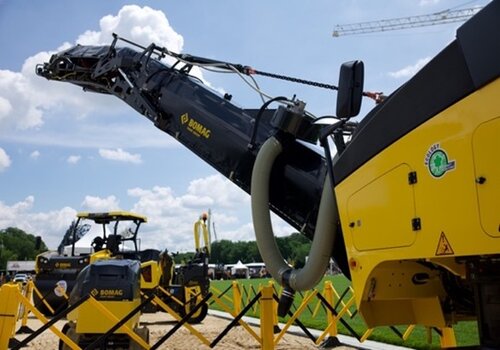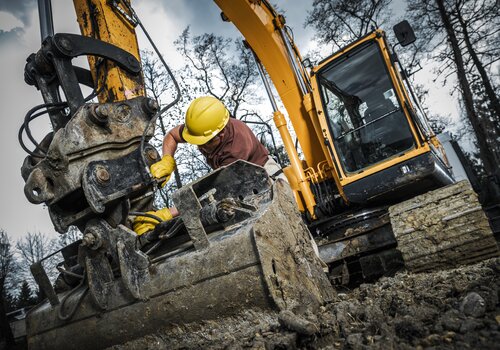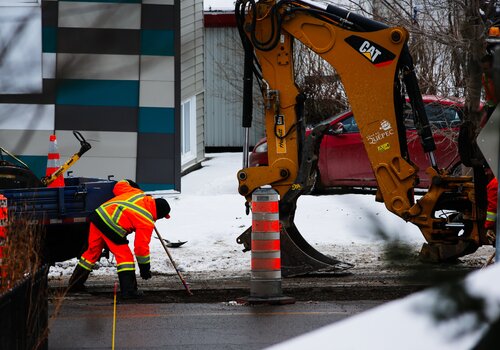Apart from workers' health, there are several other heat-related safety concerns that apply to the construction industry. These issues focus on protecting the environment, equipment and materials on the job site. Addressing these concerns is crucial to ensure the overall safety and efficiency of construction operations. Here are some important heat-related safety concerns in the construction industry:
Fire hazards
Combustible materials, such as wood, insulation and flammable chemicals, can ignite more easily in extreme heat conditions. Adequate fire prevention measures, such as proper storage of flammable materials, regular site inspections and the presence of fire extinguishers, are essential to mitigate fire hazards.
Equipment overheating
Construction equipment can overheat in high temperatures leading to mechanical failures, equipment breakdowns and even accidents. Regular maintenance, proper cooling systems and monitoring equipment temperatures are necessary to prevent overheating and ensure equipment reliability.
Concrete and mortar curing
Excessive heat can negatively impact the curing process of concrete and mortar. High temperatures can cause rapid evaporation of water, leading to surface cracking and reduced overall strength of the construction materials. Covering freshly poured concrete with wet burlap or using chemical curing compounds can help maintain proper moisture levels during curing.
Asphalt work
In hot weather, asphalt can cool and harden more quickly, making it challenging for construction workers to achieve smooth finishes. To prevent these issues, some construction projects require the use of warm-mix asphalt, which stays workable for longer periods and helps reduce greenhouse gas emissions.
Solar gain and heat island effect
Construction materials, especially dark-colored surfaces like asphalt and roofing materials, can absorb and retain heat, contributing to the urban heat island effect. This phenomenon causes cities to be warmer than their surrounding rural areas. Construction planners should consider using cool roofing materials and light-colored surfaces to minimize solar gain and mitigate heat island effects.
Storing materials prone to heat damage
Extreme heat can damage certain construction materials, such as adhesives, paints and sealants. Proper storage, transportation and handling are necessary to preserve the quality and performance of these materials during hot weather conditions.
Ground stability
Prolonged heat can cause the soil to dry out and shrink, potentially leading to ground instability and subsidence. For construction projects involving excavations or foundations, soil moisture monitoring and stabilization techniques may be necessary to prevent issues related to ground movement.
Electrical safety
Electrical components and wiring are at risk of malfunctioning or even catching fire when exposed to high temperatures. Construction companies should ensure proper installation, protection and maintenance of electrical systems to minimize the risk of electrical hazards caused by heat.
Temporary structures
Tents, canopies and other temporary structures used on construction sites may be susceptible to damage or instability in extreme heat conditions. Regular inspections and reinforcement of these structures can prevent accidents caused by their failure.
In conclusion
To address these heat-related safety concerns, construction companies should incorporate proper planning, risk assessment and preventive measures into their construction site management strategies. By taking proactive steps to manage heat-related risks, construction projects can proceed smoothly and safely, benefiting both workers and the surrounding environment.
Photo credit: Iryna Melnyk/BIGSTOCKPHOTO.COM












